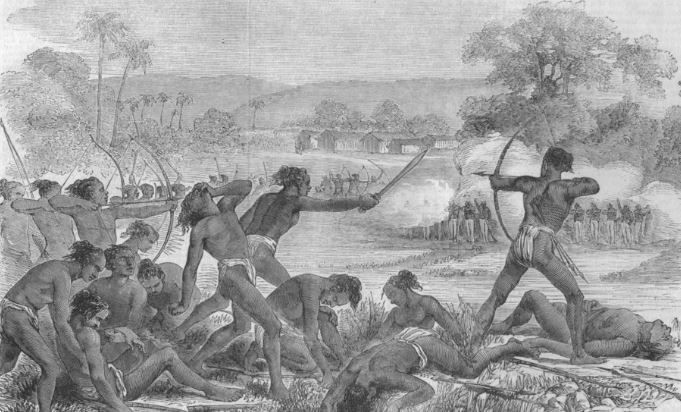Why in the News?
Jharkhand on observed ‘Hul’ Diwas to commemorate the rebellion’s 170th anniversary of Santhal Revolt which was held on June 30, 1855.

About the Santhal Revolt:
- Overview: The Santhal Hul (Revolt) began on June 30, 1855, in present-day Jharkhand, and is observed annually as Hul Diwas.
- The ‘Hul’: It means revolution, symbolising one of India’s earliest organized uprisings against British colonialism, even before the 1857 Revolt.
- Leaders Associated: It was led by Sidho, Kanho, Chand, Bhairav Murmu, and sisters Phulo and Jhano, and gathered support from 32 different tribal and non-tribal communities.
- Nature of the Revolt: The Santhal Hul was marked by tribal unity, guerrilla warfare, and was primarily an agrarian uprising, not driven by religion or elite politics.
- Causes:
-
- Exploitation by Landlords: It opposed the British East India Company, the Zamindari system, and moneylenders who exploited tribal communities.
- Damin-i-Koh Policy: In 1832, the British created Damin-i-Koh in the Rajmahal Hills to resettle Santhals from Bengal and Jharkhand to clear forests and take up agriculture.
- Alienation: Santhals were subjected to land alienation, forced labor (like kamioti and harwahi), usurious debt traps, and Zamindari-court-police nexus oppression.
- Suppression measures: The British imposed Martial Law on November 10, 1855, and crushed the uprising by January 3, 1856, using modern firearms and war elephants; Sidho and Kanho were killed in action.
- Continued resistance: Even after its suppression, tribal uprisings continued during the 1857 Sepoy Mutiny in areas like Hazaribagh and Manbhum (now Dhanbad and Purulia).
Key Outcomes of the Revolt:
- Santhal Pargana Tenancy Act (1876): This law banned land transfers to non-Adivasis, allowed inheritance under tribal customs, and protected Santhal self-governance.
- Chhotanagpur Tenancy Act (1908): Inspired by later tribal movements, it restricted sale of tribal and Dalit land, and required Collector’s approval for land transfer within caste and locality.
- Impact on Tribal Identity: The revolt helped shape tribal consciousness, legal land safeguards, and anti-colonial resistance legacies.
- Modern Legacy: The Santhals are now India’s third-largest tribal group, living in Jharkhand, Bihar, Odisha, and West Bengal, and they use the ‘Ol Chiki’ script to preserve the Santhali language.
[UPSC 2018] After the Santhal Uprising subsided, what was/were the measure/measures taken by the colonial government?
Select the correct answer using the code given below: Options: (a) 1 only (b) 2 only (c) Both 1 and 2 (d) Neither 1 nor 2 |
Get an IAS/IPS ranker as your 1: 1 personal mentor for UPSC 2024

